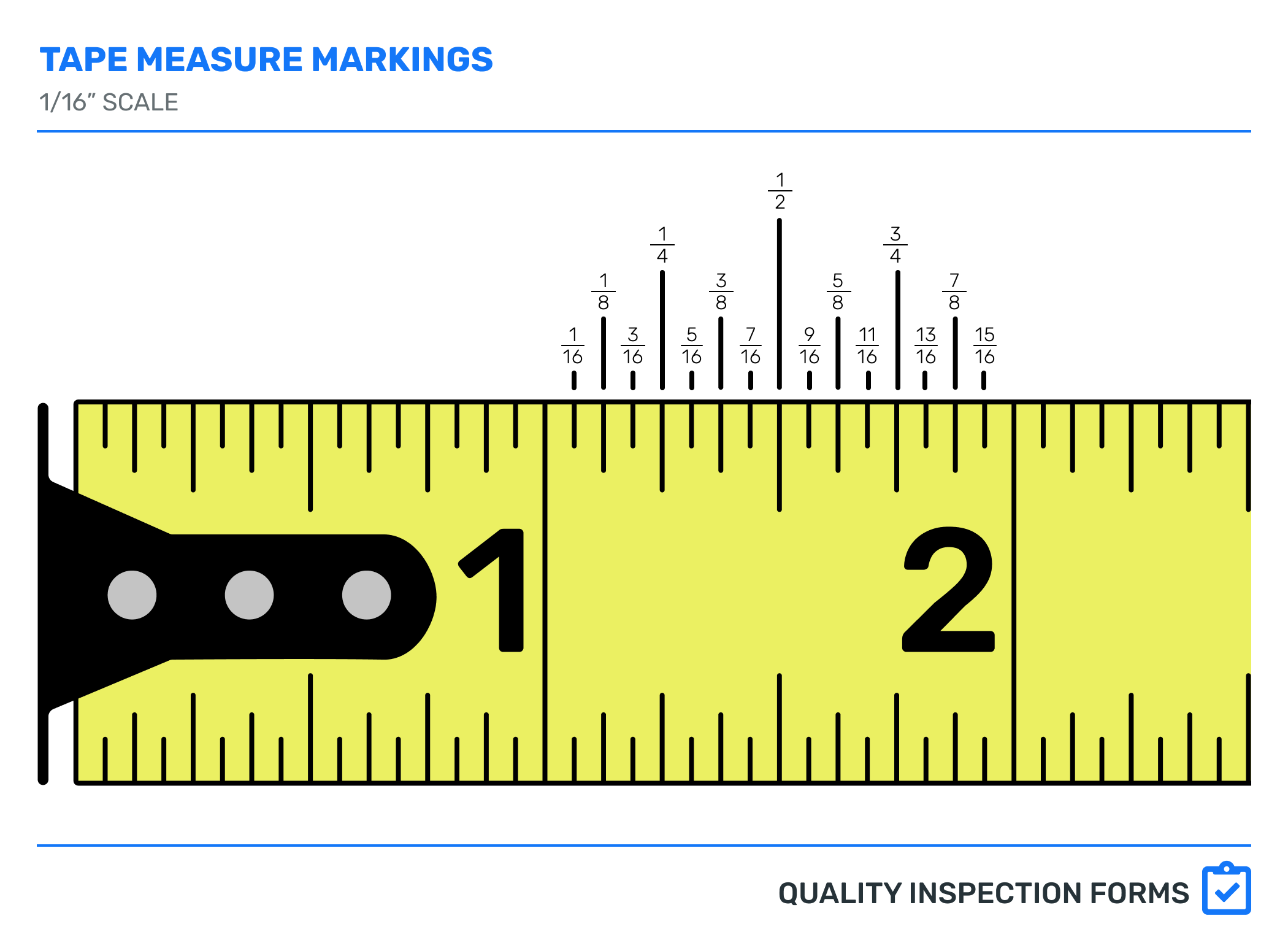FRACTION and DECIMAL CHART
CUSTOMARY & METRIC FRACTION TO DECIMAL VALUES
Measuring tapes are standard in fabrication and construction for the layout and measurement of parts. The graduation lines on a tape measure are most often in 1/16” increments, as depicted in the figure below.
Measuring Tape Markings
CONVERTING FRACTIONS TO DECIMALS
Measurement of objects using the fractional scale works well but makes adding or subtracting measurements difficult. To more accurately and efficiently add and subtract sizes, it is best to convert fractions into decimals.
It is common for millwrights and machinist drawings to use the decimal form of measurement, but the craftsman’s tape measure is most commonly in the fractional scale. This requires conversion back and forth between decimals and fractions.
It is also helpful to have customary units to metric equivalents where more and more manufactured goods utilize metric materials and fasteners.
Memorizing all the fractions’ decimal form can be done, but it is unnecessary and problematic, often leading to errors in the correct value. It is best to have a useful lookup resource to confirm you have the correct values and prevent any mistakes.
There are affordable smartphone apps and calculators that provide useful functions to handle fractions, but one of the most convenient resources is still a printed chart.
The following chart contains the fraction to decimal equivalent for both customary and metric systems through 1 inch.
Fraction and Decimal Chart



